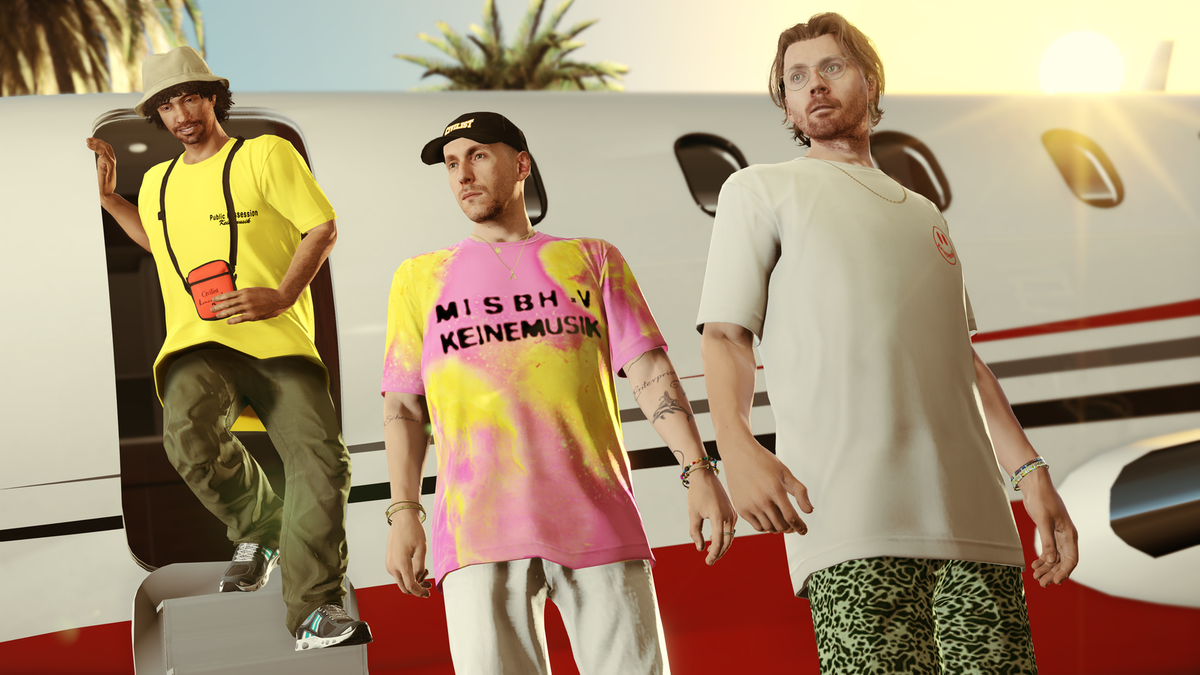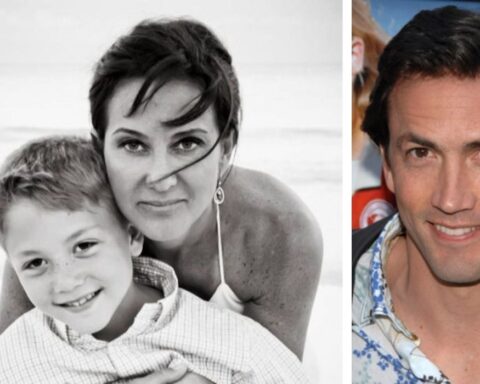Open GTA Online today and you’ll see something remarkable: players hovering over racks of digital jackets, debating textures and color palettes as if they were in a Milan boutique. The heist planning board can wait — because for many, the real mission starts in the closet.
No one expected this. When Rockstar Games first launched Grand Theft Auto in the late ‘90s, the focus was chaos, not couture. The early versions were blocky, fast, and unapologetically rough around the edges — explosions over elegance. But as the franchise evolved, a quiet shift began. The cars became sleeker, the cities more believable, and the people better dressed. By the time San Andreas arrived, the idea of walking into a Binco store or splurging at Didier Sachs felt revolutionary. You could change your look, and with it, your entire sense of self.
Then came GTA V. Its world wasn’t just vast — it was alive with taste. The character you built wasn’t defined by stats or storylines but by the small choices: which leather jacket to wear, which sneakers to pair, whether to tuck in a shirt or let it hang loose. Los Santos turned into a virtual fashion capital where self-expression replaced scripted destiny.
Players began caring about drip as much as cash. Social media communities bloomed around outfits — threads, screenshots, outfit IDs. Some treated it like a sport: who could blend class and crime the best? A few even launched entire accounts dedicated to styling avatars for strangers, helping them “dress rich” or “look cinematic.”
Rockstar didn’t push this culture. It just built a mirror. Within that reflection, players saw versions of themselves they didn’t know they wanted to become — stylists, tastemakers, digital rebels. The obsession spilled beyond the screen. Outfits inspired fan art, streetwear brands, even influencer aesthetics.
GTA’s genius was subtle. It didn’t lecture about identity or consumerism; it handed players a wardrobe and let them write their own manifesto. What started as a digital crime spree turned into one of the most influential fashion playgrounds in modern pop culture — one screenshot, one outfit, one swagger-filled strut at a time.
From Street Hustle to Streetwear
Los Santos is a strange place — a city where a diamond heist and a shopping spree can feel equally thrilling. It’s that contrast that birthed GTA’s distinct fashion DNA. Grit meets glamour. Streetwear meets satire. One minute, you’re tearing down the freeway in a stolen sports car; the next, you’re trying on a silk bomber that screams old-money chic.
The “Los Santos drip” became a movement. It wasn’t about realism — it was about attitude. Players combined tactical vests with luxury loafers, joggers with pearl necklaces, and leather jackets with neon sneakers. The combinations broke rules that fashion houses spent decades enforcing. GTA players didn’t need permission. They dressed for drama, not approval.
This rebellious streak mirrored what was happening in real-life fashion. Streetwear was rising from underground labels to global dominance. Supreme, Off-White, and Palm Angels blurred the line between street and runway, between hustle and high art. When GTA started releasing updates with luxury parodies and bold clothing drops, the timing couldn’t have been better.
Gamers weren’t just wearing clothes — they were performing identity. To log into GTA was to decide who you wanted to be that day: a CEO, a street racer, a club owner, or a lowlife who dressed like royalty. The freedom of style felt intoxicating.
And fashion brands noticed. Rockstar’s satirical takes on consumerism — stores like Ponsonbys and SubUrban — reflected the same class tension driving real-world luxury marketing. Everyone wanted a piece of rebellion polished into prestige.
Content creators took it further. On TikTok and YouTube, videos titled “How to Dress Like a Los Santos Millionaire” went viral. Fans held digital car meets that doubled as fashion shows. Some spent millions in-game money curating entire wardrobes. The creativity was contagious.
Underneath the swagger, GTA’s wardrobe spoke about class and aspiration. Wearing gold chains and designer jackets wasn’t just style — it was status, even if fictional. Rockstar, in its usual tongue-in-cheek way, turned consumer desire into both a game mechanic and social commentary.
Players embraced that contradiction. They weren’t ashamed of chasing digital luxury — they celebrated it. For many, GTA offered what the real world couldn’t: a place to wear whatever they wanted without consequence. It’s no exaggeration to say that Los Santos predicted the metaverse, years before anyone gave that word a budget.
In a way, GTA gave everyone a front-row seat to their own fashion show — and made every street corner a runway.
When Real Designers Logged In
Eventually, the boundary between digital styling and physical fashion collapsed entirely. Designers, artists, and celebrities began borrowing from the game that once mocked them.
Take A$AP Rocky — his polished street aesthetic, blending luxury with lawlessness, feels lifted from Los Santos. Travis Scott’s dystopian outfits and cinematic performances echo the same maximalist absurdity GTA made cool. Even campaign videos from brands like Balenciaga and Vetements started carrying the unmistakable tone of Rockstar’s satire: slow-motion confidence, ironic wealth, a smirk that says “I know it’s ridiculous, but it works.”
Some brands leaned in directly. Capsule collections used GTA-inspired typography and cityscapes. Streetwear designers launched drops styled as in-game ads. The boundary between parody and participation blurred until no one could tell who was imitating whom.
Meanwhile, inside the GTA community, a parallel fashion industry emerged. Modders began creating original designs — everything from jackets and watches to entire luxury lines. They weren’t working for profit, just passion. Yet their work spread fast. Players requested custom looks; streamers showcased exclusive outfits on their channels.
What started as amateur coding turned into cultural production. Some of these modders later became real-world designers, using GTA as a portfolio. They didn’t go to fashion school; they learned by dressing digital criminals.
Then came the roleplay servers, the wildest stage of all. Places like NoPixel transformed GTA into a living soap opera, where fashion was storytelling. Characters developed reputations based on their style: the cop with the flawless fade and Ray-Bans, the influencer in sequins, the underground racer with a rotating sneaker collection.
Clips of these digital personas flooded TikTok and Twitter, sparking real-world fashion debates. Fans recreated their favorite GTA character outfits for cosplay and streetwear shoots. Some influencers even styled real outfits to look more digital, mimicking GTA’s lighting and posture in their photos.
Rockstar’s art direction—grimy realism lit by California sun—became its own fashion aesthetic. Photographers and designers borrowed its palette: chrome reflections, graffiti tones, luxury against decay. Even luxury stores in major cities used that blend of irony and extravagance. You could walk into a Balenciaga store and feel like you were stepping into a high-end Ponsonbys.
By accident or instinct, GTA became fashion’s most honest mirror. It showed the absurdity, the beauty, and the performance behind every outfit. And while brands polished their runways, Los Santos kept them grounded — reminding everyone that style always starts in the street.
The Mirror Effect: Dressing Like Our Avatars
At some point, the reflection flipped. It wasn’t just that GTA copied fashion — people started copying GTA.
Scroll through Reddit, TikTok, or Instagram and you’ll see hundreds of posts where gamers recreate their in-game fits IRL. A guy in Tokyo builds an outfit around his GTA biker jacket; a student in London posts side-by-side shots of her avatar and herself in matching streetwear. What used to be cosplay has evolved into cultural translation.
There’s something deeper going on. GTA let people rehearse identities before wearing them in real life. It became a safe playground for risk-taking — bold colors, gender-blended silhouettes, designer parodies without price tags. When that confidence carried offline, players found themselves walking taller.
Psychologists have a phrase for it: “enclothed cognition.” Clothes influence how we think and act. In GTA, the connection is direct — outfit equals attitude. A player wearing a full tuxedo to a mission doesn’t just look sharp; they feel sharper, braver, maybe even luckier.
Influencers helped this crossover explode. Roleplay streamers built fandoms around their characters’ wardrobes. Followers debated jackets, sunglasses, and hairstyles the same way fashion magazines critique red carpet looks. Some streamers even partnered with real brands, blurring the last boundary between fiction and fashion commerce.
But it wasn’t just about fame. For many players, styling an avatar became a quiet form of therapy — a way to explore sides of themselves they didn’t always show. GTA’s digital anonymity gave them space to experiment. A male player might wear flamboyant jackets he wouldn’t dare buy offline. A woman might mix combat boots with couture dresses. No judgment, just freedom.
It was also a global equalizer. GTA doesn’t care where you’re from or how much your real clothes cost. Inside Los Santos, anyone can look like a billionaire. The democratization of fashion — something real-world brands only talk about — already existed in this virtual city.
Offline, that spirit started bleeding into everyday life. Streetwear became more expressive, less rule-bound. People stopped worrying about “appropriate.” They started dressing for vibe. GTA helped rewire what “cool” meant — less about labels, more about attitude.
In a way, GTA created fashion without fashion weeks, without gatekeepers, without editors. Just self-expression, cars, chaos, and confidence.
Couture in Chaos: What It Means for Fashion’s Future
There’s poetic irony in the fact that a game built around lawlessness ended up predicting the fashion industry’s next frontier. GTA’s world, with its satire of consumerism and obsession with image, turned out to be a blueprint for the digital age of fashion.
Players were already spending hours curating digital closets before NFTs or “wear-to-earn” existed. They didn’t need blockchain to tell them that what you wear online matters. Rockstar understood instinctively that fashion isn’t about ownership anymore — it’s about presence. How you show up in the feed, not what hangs in your real closet.
Luxury brands caught up. Balenciaga launched a video game collection. Gucci sold digital sneakers. Nike patented virtual shoes. Every brand now wants to dress your avatar — and it’s all echoing the culture GTA built more than a decade ago.
Even the city’s in-game architecture influenced design. Fashion students referenced Los Santos’ lighting and colors in mood boards. A few designers have said openly that GTA screenshots inspired their lookbooks. Some boutique pop-ups recreated its interiors — one in London famously styled mannequins beside restaurant furniture modeled after a Los Santos diner, blending satire, nostalgia, and style in one surreal gesture.
But GTA’s legacy isn’t just visual; it’s philosophical. It taught an entire generation that fashion could be personal rebellion, not conformity. It mocked excess but still made it look irresistible. It laughed at luxury while secretly teaching millions to appreciate silhouettes, coordination, and confidence.
The future of fashion may look more like GTA than Paris. Metaverse dressing rooms, AI stylists, digital influencers — all trace their roots to the Los Santos mindset. The player is the designer. The outfit is the story. The world is the stage.
And yet, what makes GTA’s fashion culture enduring isn’t its tech or realism. It’s emotion. The thrill of crafting a look that feels like you — even in a city built on chaos. The joy of walking through a virtual street knowing you nailed your outfit. The sense of control in a game where control is rarely guaranteed.
Maybe that’s why people never stopped dressing up in GTA. Style became its quiet rebellion — a way of finding beauty in absurdity.
The true heist wasn’t the diamonds or the cars. It was how GTA stole fashion’s heart, reshaped its rhythm, and gave it back with a wink. It proved that identity doesn’t need to be bought, earned, or even real — it just needs to be worn with conviction.
Los Santos may be a digital illusion, but its influence on fashion is very real. Every leather jacket on a rapper, every ironic runway show, every viral streetwear drop owes a little to that virtual city where chaos meets couture.
And somewhere, right now, another player stands before a glowing wardrobe in a safehouse, choosing between two perfect pairs of sneakers — because in GTA, dressing well is never optional.








